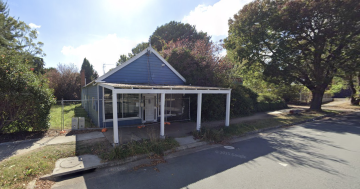
Development application processing times in the QPRC average 120 days. Photo: NSW Planning Portal.
Queanbeyan-Palerang Regional Council (QPRC) has acknowledged “community angst” as wait times for development application (DA) processing average 120 days.
Substantial growth in new housing developments, combined with challenges in attracting and retaining assessment staff were given as reasons for the backlog.
CEO Rebecca Ryan said council had formulated a raft of measures to address short and long-term issues, as well as reduce delays caused by the “unprecedented demand”.
“Having now been in the CEO role for close to a month, one of the regular complaints councillors and I are hearing from the community are concerns about lengthy delays processing and assessing DAs,” she said.
“Together with senior staff, we are working to resolve these issues as quickly as we can to clear the current backlog and put in place some longer-term improvements.”
QPRC has received more than 670 DAs already this financial year, ranging from simple structures such as sheds, pools and pergolas, to new and secondary residential dwellings, large-scale commercial, industrial and multi-residential developments – all of which involve different levels of complexity.
Processing time also depended on whether the site was suburban or rural, which could then add issues of environmental matters, onsite sewage management, bushfire risk, etc. Sometimes additional information was sought, which meant council staff couldn’t continue a claim until all the facts were received.
Ms Ryan said the number of DAs had increased by 20 per cent over the past two years, while the council’s development assessment team had been operating with only half its usual staff.
“We have had significant turnover of staff in fields of town planning, building surveying and development engineering,” she said.
“Vacancies in these fields have proved difficult to fill across NSW, with many councils currently reporting skills shortages in these areas and delays with DAs.”
Short-term solutions to address the backlog included reassigning some council staff to support the development assessment team, as well as hiring short-term contractors.
Council was also attempting to fill two town planner positions, as well as the currently open specialist town planner, building and development liaison officer and two senior development engineer positions.
Ms Ryan said various changes to legislation had increased the complexity of many applications, which in turn meant more detailed assessments were required, resulting in longer assessment times.
“This issue is not unique to QPRC,” she said.
The NSW Government had invited council to apply for support to reduce DA waiting times, including use of the Regional Housing Flying Squad Program, where a panel of planning consultants were engaged to assess regional housing DAs remotely on council’s behalf.
“I acknowledge the delays are a major cause of frustration and cost to developers, and I wish to reassure all applicants whose DAs are already lodged that the issue is being given highest priority, and we are doing all we can to address the delays,” Ms Ryan said.
“We are making a concerted effort to clear as many DAs as we can, and we ask for the community’s patience over the coming months while we continue to address the problem.
“All DAs are lodged via the NSW Planning Portal and while it looks difficult, it is quite user-friendly, as long as you have your plans and other reports available electronically to upload.”
Those who wished to lodge a DA were invited to check with council staff what was required, as they could provide a link to all resources needed by applicants and their builders.














